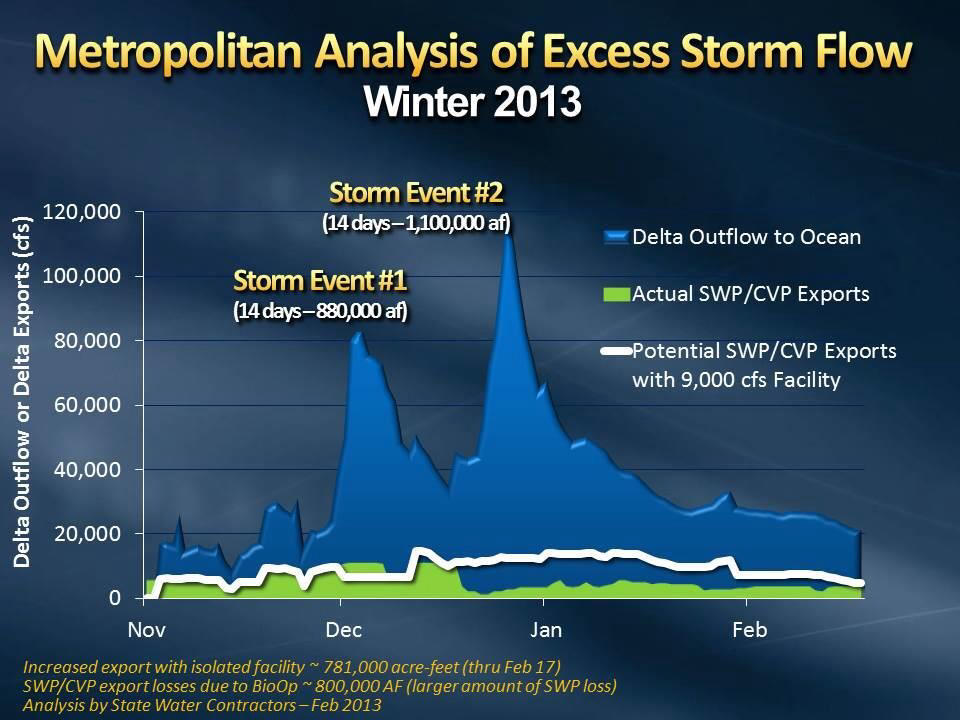The Metropolitan Water District of Southern California, commonly known as MWD, recently released a series of information papers on the California WaterFix (Delta Tunnels). In this first in a series of posts I address MWD’s “assessment” of what will happen to the Bay-Delta environment and fish community if the WaterFix is built and operated.
One figure from MWD’s papers demonstrates the primary flaw in its assessment.

This key figure from the MWD’s papers accurately portrays the WaterFix’s potential “benefit.” But it leaves out the back story. The “uncontrolled” winter flows from Mother Nature’s few-and-far-between miracle rain events in drought years like 2013, as portrayed in the figure, were long ago allocated to the Bay-Delta as a small compensation for all the water taken from potential Bay inflow not shown in the chart.1 The proposed new WaterFix exports shown by the white line would take a good-sized bite out of what was left for the Bay. The proposed Sites Reservoir would take another large bite.
It is true that exports from the south Delta were only about 2 million acre-ft for water year 2013: export water rights are among the last in line, especially in very dry years. About 2 million acre-ft, roughly the same amount of water as exports, flowed to the Bay from the uncontrolled winter flow. The other Delta outflow for the year was water that was released from storage to repel salinity and thus keep water for exports and Delta farming fresh enough to use.
The caption at bottom left of the figure attributes the loss of 800,000 acre-ft to biological opinions for fish, and suggests that WaterFix would “recover” these “losses.” The “loss” is not real and “recovery” of this water would only be possible at the further expense of fisheries already in collapse. The present (and past) restrictions on exports are needed to protect (1) the tens of millions of young hatchery and wild salmon and steelhead moving from rivers to the Bay-Delta and ocean during the flow pulses, and (2) the spawning runs of Delta and longfin smelt, which are also keyed to the flow pulses. Screening the WaterFix intakes is not going to protect the flow needs of the fish that depend wholly on the storm flows moving through the Delta to the Bay and ocean.
- Past water rights and water quality control plans, as well as various water project operating agreements, recognized the important role played by uncontrolled Delta inflows and outflows. Qualifiers to such agreements commonly stated that further allocation or access to these uncontrolled would not be made without careful review of the environmental consequences. ↩
